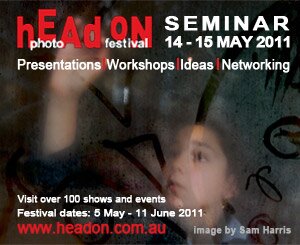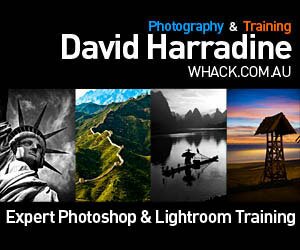|
|
|
| Sony NEX-3 Digital Camera Review |
|
Digital Camera Review by: Katrina Putker
While the NEX-3 is, in truth, slightly awkward in appearance given its fusion design aesthetic: having a body built in typical compact camera style and a lens that references those normally only found on a DSLR, those who baulk at the unconventional design of this unique camera from Sony will quickly be converted upon putting the unit to the use for which it was intended: photography that is, not as a fashion accessory.
While the NEX-3 isn’t something you can easily pop into your pocket given both its size and the L-shape style of its design, it far out-classes other pocketable ultra compacts in terms of speed, image quality and overall capability.
No great surprise given that its sensor is a good fifty percent larger than the much-touted Micro Four Thirds format cameras currently sweeping the market.
As per the NEX-5, the NEX-3 sports a 14-megapixel CMOS sensor and a 3-inch widescreen format TFT TruBlack LCD that cleverly pulls out and away from the body allowing for tilting angles of approximately 85 degrees up and some 45 degrees down.
This enables flexible and accurate compositions be they from above the head, at the toe or by the hip etc. and as such help extend the user’s creative picture taking to a new level both literally and figuratively.
While the physical operation of the screen can be stiff and slightly awkward the benefits of its existence far outweigh that fact.
The LCD display is beautiful in it’s clarity, brightness and sharpness and fortunately this level of quality transfers well on to screen.
The shutter function on the NEX-3 takes some initial getting used to. For starters it’s fairly sensitive - which certainly isn’t a bad thing - but a single depression seemingly fires two shots at a time.
While in fact that isn’t the case, in terms of both the sound produced (not dissimilar to that in continuous or speed priority continuous shooting modes) and the small double vibration felt at the time of shooting, one could be forgiven for assuming the NEX-3 produces doubles of every shot taken.
To that end and certainly as a result of the quite noisy and seemingly multiple shutter function, the NEX-3 isn’t necessarily a camera designed for discreet use. While yes, it’s relatively small and lightweight compared to chunky DSLR counterparts, it does have quite a noisy and abrupt shutter release function. An extensive ISO range of 200-12,800 is available and fortunately Sony doesn't attempt to deny the unavoidable noise that will be present shooting way up at ISO 12,800, warning users that ‘image roughness becomes more apparent’ at this setting.
Whilst that fact is not at all surprising the direct approach from a major manufacturer is certainly appreciated.
The internal menu system is attractively and neatly laid out. Scrolling through the many options can be done quickly and easily as helpful explanations/definitions of each available option automatically display to help users understand and best control the NEX-3.
A convenient background defocus effect is available in auto intelligent mode, which is a an easy way for users to select the amount of depth of field in their images i.e. how much is in - and consequently out of - focus.
Essentially this feature acts an automated aperture control that alters the depth of field and offers users an on-screen preview of the result prior to firing the shutter. It’s a very simple yet effective idea that delivers on the promise of adding an additional dimension to images and allows the budding photographer to learn the concept of aperture and use the function in their picture taking perhaps without even realising they’re doing so.
Alternatively, knowledgeable photographers will understand the theory behind the function and have a quick way of utilising the effects of aperture without switching into manual or aperture priority modes. The NEX-3 is slightly larger than the NEX-5 but it doesn’t have the same magnesium alloy body.
Despite this it feels remarkably similar in hand in terms of weight and finish though the handgrip has been made smaller and less grabbable thus making the NEX-3 a little less stable in hand overall.
Manual, program, aperture and shutter priority modes are available for those who don't want to rely on intelligent auto (despite its effectiveness) but prefer to have full creative control over their picture taking (either in RAW, JPEG or both formats simultaneously.)
As with the NEX-5, eight scene modes are available and include: portrait, sports action, sunset, night portrait, landscape, macro, night view and hand-held night shot. As users scroll through the options, a sample image is provided along with an explanation of what the scene mode does and/or when to best use it.
A separate anti motion blur mode is available to help minimise the effects of blur when shooting either indoors under low light or when photographing telephoto. Helpful shooting tips are available relevant to your current settings at the push of a button and include information on how to best shoot group photos, hold the camera, avoid blur, position subjects off-centre, make children smile, freeze motion and form light trails to name but a few.
An impressive seven frame per second 3D sweep panorama mode is also accessible to automatically (and promptly) stitch images together in camera for both horizontal and vertical panos in just a few clicks. Admittedly the user must have a steady hand in order to allow for accurate stitching and so some practice will be required for the best results but the practice will be well worth it particularly for those with a compatible Sony Bravia 3D TV.
In terms of the marketplace the NEX-3 is most likely positioned in the space between high-end ultra compacts and low-end DSLRs and intending to service those consumers wanting to upgrade not only their gear but their skills and knowledge as well.
If you’ve outgrown the simplicity of happy snap point-and-shoot compacts but are intimated by the bulk, price and function of a DSLR then a camera like the NEX-3 would be a perfect choice for you.
|
|||||||||||||||||||||||||||||||||||||||||||||||||||||||||||||||||||||||||||||||






 The less expensive cousin to Sony’s NEX-5 (reviewed at Buy-n-Shoot back in mid 2010) differs literally only in a few areas to its counterpart: it’s slightly larger, doesn’t support HD movie mode (although it does record standard footage) and lacks an infrared remote receiver. Aside from that the NEX-2 is otherwise as equally as impressive.
The less expensive cousin to Sony’s NEX-5 (reviewed at Buy-n-Shoot back in mid 2010) differs literally only in a few areas to its counterpart: it’s slightly larger, doesn’t support HD movie mode (although it does record standard footage) and lacks an infrared remote receiver. Aside from that the NEX-2 is otherwise as equally as impressive.



